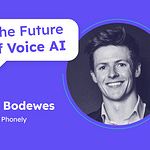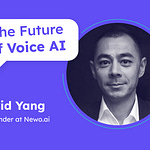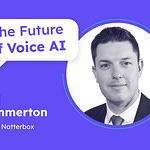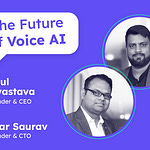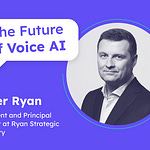In The Future of Voice AI series of interviews, Davit asks three questions to his guests:
- What problems do you currently see in Enterprise Voice AI?
- How does your company solve these problems?
- What solutions do you envision in the next 5 years?This episode’s guest is Tom Lewis, SVP Head of Consulting at TTEC Digital.
Tom has spent the last 30 years focused on Customer Experience and helping clients improve their relationship with their end customers through People, Process, Technology, and Strategy improvements. He has served as an executive leader at firms such as PwC, Deloitte, and Accenture. He was the CEO of an AI SaaS business for 6 years, focused on CX, which he successfully exited to Private Equity.
TTEC Digital specializes in CX technology solutions. They provide services that enable companies to design, implement, and manage digital customer experiences across various channels. Their offerings include analytics, automation tools, and cloud-based contact center software, aimed at enhancing customer engagement, optimizing operations, and delivering personalized customer interactions.
Recap Video
Summary
Enterprise Voice AI Problems: Tom identifies a significant gap between customer expectations for voice-enabled experiences and what brands currently deliver. Despite advancements in voice technologies, customer satisfaction has decreased due to heightened expectations set by other AI advancements, such as ChatGPT. This "trillion dollar gap" arises from the challenge of meeting these expectations amidst rapid technological evolution.
Solutions and Industry Adoption: Enterprises increasingly recognize the value of enhancing customer experience through voice AI, focusing on solutions that reduce effort for customers. Tom highlights the importance of choosing the right channel for the right type of communication and investing in technologies that provide the best ROI. Traditional IVR systems, for example, still offer substantial benefits for automating basic transactions.
Future of Voice AI: Looking ahead, Tom predicts the emergence of digital voice as a significant trend, improving voice interaction accuracy and customer experience. However, adoption challenges persist, primarily due to human behavior and the slow adoption of new interaction models, such as WebRTC and digital voice technologies.
Role of TTEC Digital: The company assists other organizations in improving their customer experiences through technology, strategy, and analytics. They work closely with major technology partners and specialize in integrating best-of-breed technologies to address unique customer service challenges.
Large-Scale Deployment and ROI: Tom confirms the successful enterprise deployment of technologies like call summarization and agent assist tools, which improve efficiency and customer service. These technologies are already generating positive ROI, although adoption among individuals remains a challenge.
Takeaways
Customer Experience vs. Technology Gap: There's a significant gap between what customers expect in voice-enabled experiences and what is currently being provided. Despite technological advancements, customer satisfaction with voice AI is decreasing due to higher expectations set by other AI advancements, such as ChatGPT.
Importance of Voice in Human Communication: Voice is a natural and primary mode of communication for humans, making it critical for machines to effectively understand and respond to voice inputs to improve customer experiences.
Enterprise Recognition and ROI Improvement: Enterprises have recognized the value of improving customer experience through voice AI. The ROI for implementing voice solutions has improved, leading to more widespread adoption of voice-enabled functionalities.
Challenges with Agent Assist Technologies: While there is excitement around agent assist technologies and their potential to improve productivity and customer service, widespread adoption and deployment at scale remain challenges.
Digital Voice as the Future Trend: The shift towards digital voice, facilitated by mobile-first approaches and integrated digital environments, is predicted to significantly enhance the accuracy and quality of voice interactions.
Human Behavior and Adoption Rates: The adoption of new voice AI technologies and interaction models is slow, largely due to human behavior and resistance to change, rather than technological limitations.
TTEC Digital's Role: TTEC Digital, as a subsidiary of TTEC, focuses on helping companies improve their customer experiences through technology, strategy, and analytics, leveraging partnerships with major technology providers and specialized vendors.
Referenced:






